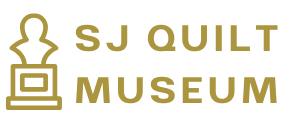In the world of home financing, two contenders often face off: reverse mortgages and Home Equity Lines of Credit (HELOCs). Both options can help homeowners tap into their hard-earned equity, but choosing the right one is like picking between a cozy blanket and a hot cup of cocoa—both are comforting, but they serve different purposes.
Imagine turning your home into a cash machine without lifting a finger. That’s the allure of a reverse mortgage. On the flip side, a HELOC offers flexibility, letting homeowners borrow what they need, when they need it—like a credit card with a homey twist. With such enticing options on the table, understanding the differences can save homeowners from financial headaches down the road. So let’s dive in and figure out which option suits your needs best.
Table of Contents
ToggleOverview of Reverse Mortgage and HELOC
Reverse mortgages allow homeowners aged 62 and older to convert a portion of their home equity into cash. This option offers a steady cash flow, often utilized for retirement expenses. Homeowners do not make monthly payments; instead, the loan is repaid upon selling the home, moving out, or passing away.
In contrast, Home Equity Lines of Credit (HELOCs) provide homeowners with access to their home equity as needed. This revolving credit line works similarly to a credit card, enabling flexibility. Borrowers can withdraw funds, make interest-only payments during the draw period, and pay off the principal later.
Interest rates differ between these products. Reverse mortgages typically carry higher rates than HELOCs. Borrowers should carefully assess their repayment obligations and long-term goals before choosing a financing option.
Both options come with unique costs. Reverse mortgages include upfront costs such as mortgage insurance and closing fees, while HELOCs may involve annual fees and maintenance costs. Understanding these expenses plays a crucial role in decision-making.
Homeowners should evaluate their financial needs and personal circumstances when deciding between these two products. A reverse mortgage suits those seeking predictable income without monthly payments. A HELOC aligns with those needing flexible access to funds for various expenses. Assessing these attributes ensures that homeowners make well-informed financial choices.
Key Features of Reverse Mortgages

Reverse mortgages present unique features that cater to specific homeowner needs. These features include eligibility criteria, loan amounts, and repayment terms.
Eligibility Requirements
To qualify for a reverse mortgage, homeowners must be at least 62 years old. They need to own their homes outright or have a limited mortgage balance. The property must serve as the primary residence during the loan term. Lenders assess the homeowner’s financial status, including income and credit history, though credit score isn’t a primary factor. Counseling from a government-approved agency is often required, ensuring borrowers understand their options.
Loan Amount and Repayment
Loan amounts for reverse mortgages depend on several factors, including the home’s appraised value and the borrower’s age. Generally, older homeowners can access larger amounts due to the equity built over time. Repayment occurs when the homeowner sells the home, moves out, or passes away. The loan balance consists of borrowed funds plus accrued interest. No monthly payments are necessary, providing ease and financial relief during retirement. Homeowners or their heirs inherit any remaining equity after the loan is settled.
Key Features of HELOC
A Home Equity Line of Credit (HELOC) provides homeowners with flexible access to funds based on their home equity. Understanding its key features helps in evaluating if it’s the right choice.
Eligibility Requirements
To qualify for a HELOC, homeowners usually must demonstrate sufficient equity in their homes. Lenders generally look for a credit score of 620 or higher, along with a stable income and a low debt-to-income ratio. The property must serve as the primary residence, and any existing mortgage balance may impact eligibility. Lenders typically assess the home’s appraised value to determine how much equity can be accessed.
Draw Period and Repayment
The draw period for a HELOC usually lasts 5 to 10 years, allowing homeowners to withdraw funds as needed during this time. Interest-only payments often apply during the draw period, making it a manageable option for many. After the draw period ends, repayment begins, usually over a term of 10 to 20 years. Borrowers typically pay both principal and interest during this repayment phase, which can significantly affect monthly budgets.
Comparison of Reverse Mortgage and HELOC
Understanding the distinctions between reverse mortgages and HELOCs helps homeowners make informed choices regarding their financial needs. Each option presents unique costs, interest rates, and impacts on home equity.
Costs and Fees
Reverse mortgages typically incur higher upfront costs, including mortgage insurance and closing fees. Homeowners might pay 2% of the home’s value in mortgage insurance alone. In contrast, HELOCs often involve lower initial expenses but can still carry annual fees or maintenance costs. Understanding each product’s fees can clarify financial obligations, guiding homeowners toward the right choice.
Interest Rates
Interest rates play a significant role in deciding between these options. Reverse mortgage rates generally exceed HELOC rates, impacting the total cost over time. HELOCs often offer variable rates tied to market indices, leading to potentially lower payments during low-rate periods. Homeowners should compare rate structures to determine the more cost-effective option for their financial landscape.
Impact on Home Equity
Both financial products directly affect home equity. With a reverse mortgage, the loan balance increases as payments are deferred, reducing the equity available over time. HELOCs allow homeowners to draw from their equity while retaining ownership. Recognizing how each impacts overall equity helps in evaluating long-term financial strategies.
Choosing the Right Option for You
Evaluating personal financial needs is essential when selecting between a reverse mortgage and a Home Equity Line of Credit (HELOC). Homeowners aged 62 and older might find a reverse mortgage more appealing due to the no monthly payment requirement. This option provides a steady income stream, perfect for covering retirement expenses.
Assessing cash flow is important. A HELOC offers flexibility and allows homeowners to borrow funds as needed, similar to using a credit card. With this product, interest-only payments during the draw period make budgeting easier, but significant payments start after the draw period ends.
Considering costs plays a crucial role as well. Reverse mortgages often carry higher upfront costs, including mortgage insurance and closing fees. On the other hand, HELOCs may entail annual fees, which can add up over time.
Interest rates also differ considerably. Reverse mortgage rates usually exceed those of HELOCs, which generally have lower variable rates. This can impact total repayment amounts and effectiveness in long-term financial planning.
Age and credit score requirements vary between the two options. For instance, reverse mortgages require borrowers to be at least 62 years old, and lenders don’t prioritize credit scores. In contrast, HELOCs typically require a credit score of 620 or higher, ensuring borrowers have sufficient equity and income stability.
Understanding the effect on home equity is vital. Reverse mortgages reduce available equity as the loan balance increases, while HELOCs allow continued access to home equity without immediate repayment obligations. Homeowners should consider how each option aligns with their long-term goals and financial strategy.
Choosing between a reverse mortgage and a HELOC ultimately hinges on individual financial needs and circumstances. For seniors seeking a stable income without monthly payments a reverse mortgage offers a viable solution. It provides essential funds during retirement while allowing homeowners to remain in their homes.
On the other hand a HELOC presents flexibility for those who need access to funds for various expenses. With interest-only payments during the draw period it can be an attractive option for younger homeowners looking to manage their cash flow effectively.
Understanding the nuances of each option empowers homeowners to make informed decisions that best suit their financial goals. Careful consideration of costs interest rates and long-term implications on home equity is crucial in this process.








